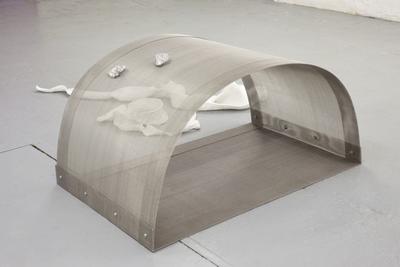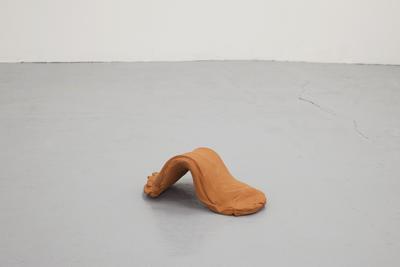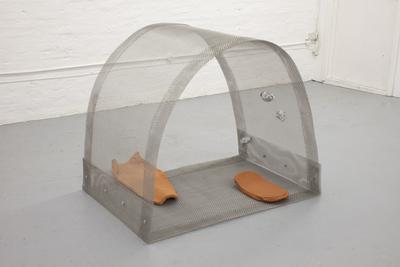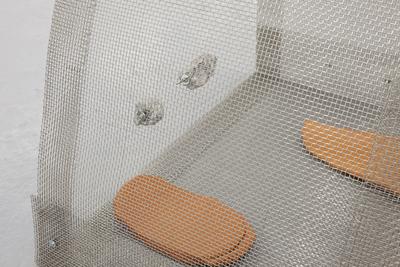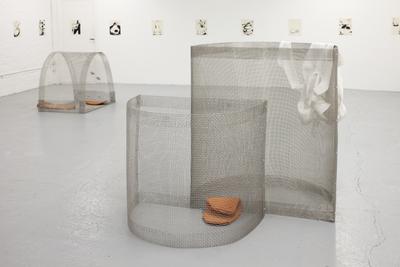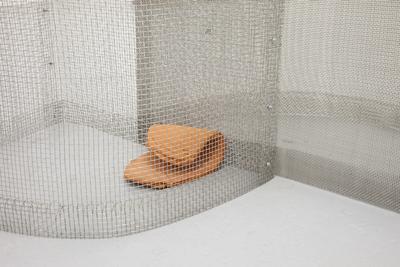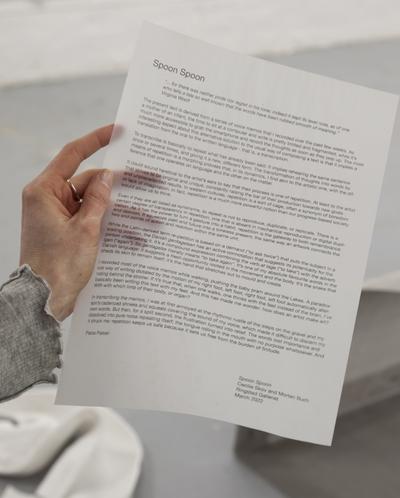Spoon Spoon
'Spoon Spoon' @ Ringsted Galleriet, 2022.
Spoon spoon
"... for there was neither pride nor regret in his tone; indeed it kept its level note, as of one who tells a tale so well known that the words have been rubbed smooth of meaning."
Virginia Woolf
The present text is derived from a series of voice memos that I recorded over the past few weeks. As a mother of an infant, the time to sit at a computer and write is pretty limited and fragmented, while it's much more accessible to grab the smartphone and record the thoughts as soon as they pop up. The most interesting aspect about this alternative solution to the usual way of composing a text is that it implies a translation from the oral to the written language - that is, a transcription.
To transcribe is basically to repeat what has already been said. It implies rehearing the same sentence once or several times, and giving it a new, different form. The transformation of thoughts into words by means of repetition is a morphing process that, in its dynamics, I find akin to the artistic one, with the difference that one operates on language and the other on the matter.
It could sound heretical to the artist's ears to say that their process is one of repetition. At least to the artist that strives to be original and unique, constantly raising the bar of their production towards new goals and unprecedented results. In western cultures, repetition is a sort of cage, often a synonym of boredom or lack of imagination. In fact, repetition is a much more powerful notion than our progress-based society would allow us to think.
Even if they are all listed as synonyms, to repeat is not to reproduce, duplicate, or replicate. There is a certain degree of transparency in repetition, one that is absent in mechanical reproduction or digital duplication. As it has the power to turn a gesture into a habit, repetition is the gateway to both remembrance and oblivion. It squeezes past and future into a timeless present, the same way an artwork connects the two end points of action and reaction within the same unit.
While the Latin-derived term re-petition is based on a demand ("to ask twice") that puts the subject in a waiting position, the Danish gentagelsen has an active connotation that suggests its potentiality for the person undertaking it. It's a compound expression combining the verb at tage ("to take") with the adverb igen ("again"). So gentagelse literally means "to take again". It's one of my absolute favourite words in the Danish language: it suggests a fresh opportunity rooted in the movement and the body. It's the snake that sheds its skin to remain itself; it's the hand that stretches out to mould and create.
I recorded most of the voice memos while walking, pushing the baby pram around the Lakes. A paradoxical way of writing dictated by the motion of my right foot, left foot, right foot, left foot automatically alternating behind the stroller. If it's true that, when one walks, one thinks with the feet instead of the brain, I've basically been writing this text with my feet. And this has made me wonder: how does an artist make art? With with which limb of their body, or organ?
In transcribing the memos, I was at first annoyed at the rhythmic rustle of the steps on the gravel and my son's cadenced shrieks and squeals covering the sound of my voice, which made it difficult to discern my own words. But then, for a split second, the frustration turned into relief. The words lost importance and dissolved into pure noise repeating itself; the tongue rolling in the mouth with no purpose whatsoever. And it struck me: repetition keeps us safe because it sets us free from the burden of finitude.
Text by Paola Paleari

